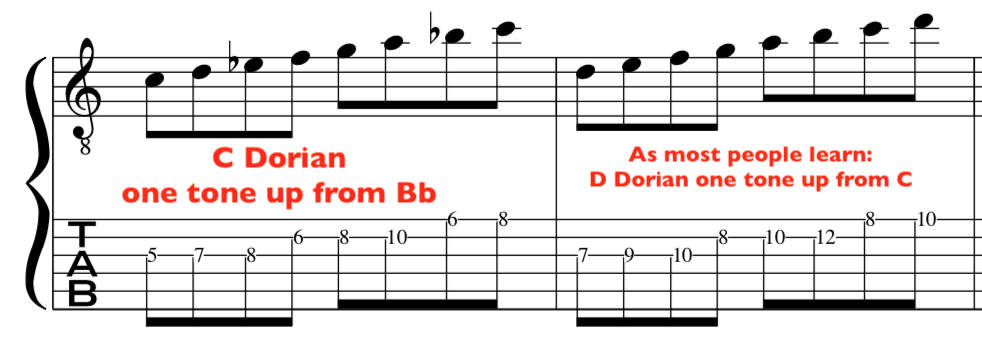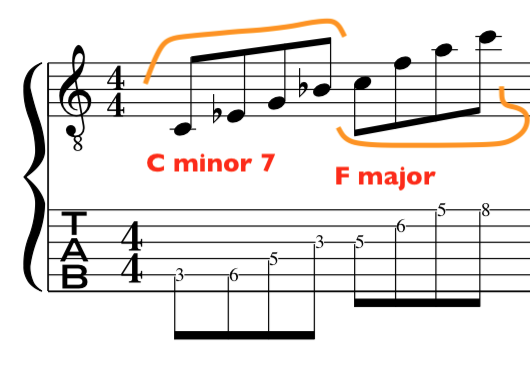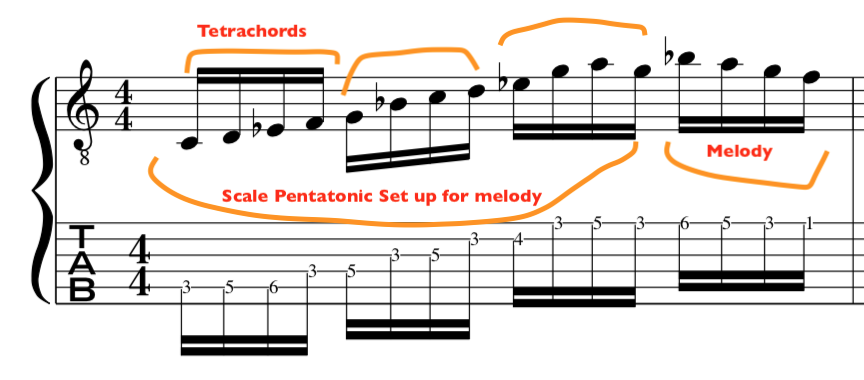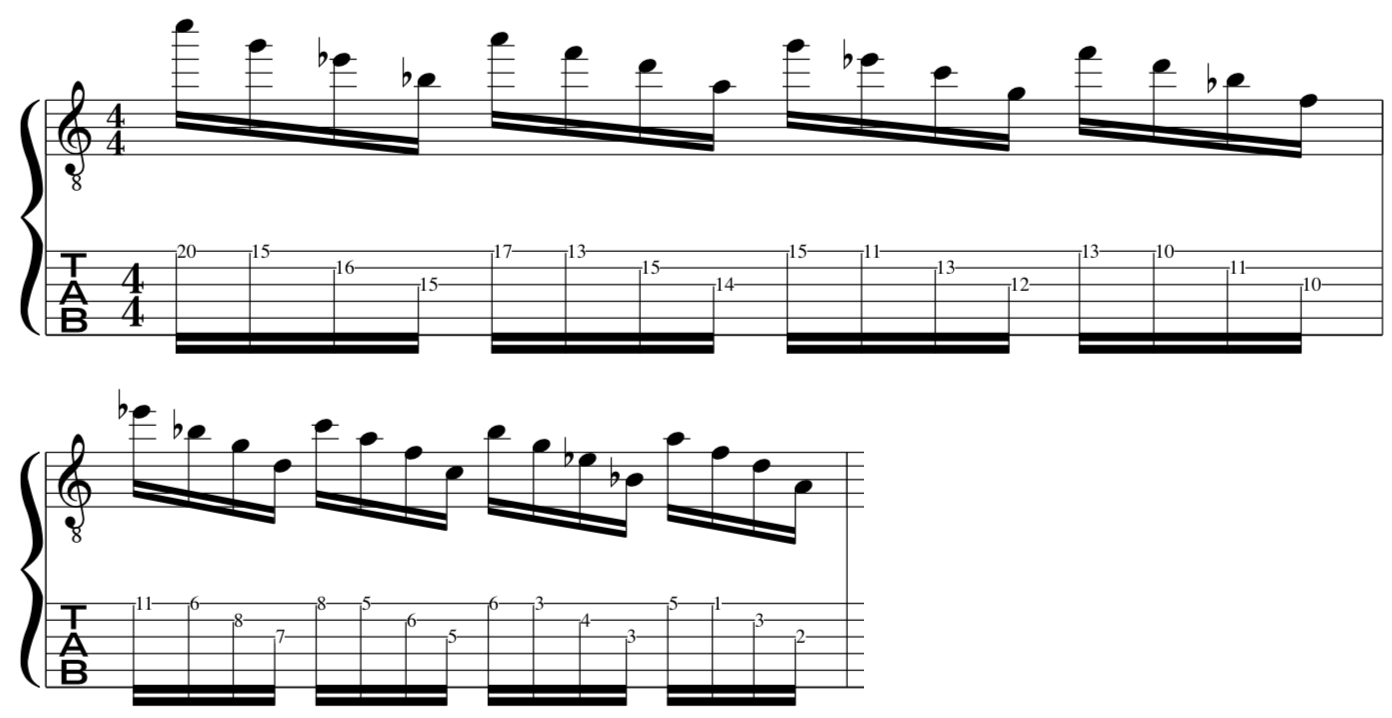The key to improvising is to do something creative with the melody. To recompose it or to broaden it out or to instinctively develop the harmony. Most people take to the modes though with a compulsion to play “Carte Blanche” scale over a chord ad nauseam.
In this Blog/Vlog we will look at some ideas for bringing out the actual flavour of the most talked about mode of them all the “Dorian Mode”.
Most people look at the dorian mode as being a scale of C major starting on the note D. But here is how it works.
ANSWER=D is one tone up from C for D Dorian, so C is one tone up from Bb for C Dorian.

Below we see the difference between C minor and C dorian. C minor has the semitone between the 6th and 5th whereas C Dorian has a tone between the 5th and 6th notes. Dorian Raises the 6th note up a semitone. Without the raised 6th note C would just sound minor and not dorian, so bringing out this 6th note [as it will be in a melody to imply that we are in the dorian mode] is essential to creating actual music and phrasing and not just playing a scale over a chord.

In order to bring out that A natural note in C dorian an easy way is to employ an arpeggio like Bb major 7th. This is very useful, melodic and can be played in 4 note groupings.

Next we can employ some basic chord pairs.
C minor 7 and F major

F major and Eb major

Now we can broaden out on this with C minor and D minor

Bb and G minor

We can also employ pentatonics to bring out the flavour [melody] of a tune.

Another example =Short pentatonic scale that ends/resolves with the A natural note [Raised 6th] and played in 4 note cells [Tetrachords]

Finally it’s a good idea to look at the arpeggios available that line up one after the other.

Thanks for viewing this Blog. If it was of interest to you then please Subscribe to us on Youtube. Click Below!
